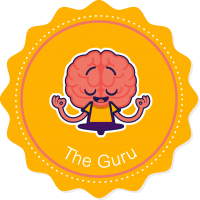Assessments and evaluation play an important role in the teaching and learning process. They are conducted continuously throughout the year and aid in analysing the students’ learning and understanding where they lag. This can help teachers identify where learners need extra help and support in different subjects. Evaluation in one form or the other is inevitable, whether online assessments or offline, they are important.
A course cannot be taught effectively without evaluating students’ knowledge. It is done through an integration of project work, surprise tests and final exams, with the help of which teachers can grade students’ performance. Examinations help the teachers ensure that students are understanding the subject matter and are able to use their understanding of the subject in their daily life. However, there are various methods of evaluation depending upon the needs of the students that a teacher can use. The most effective and common evaluation techniques are mentioned below.
Types of Evaluation Techniques
1. Formative Evaluation
This method of evaluation is used to check the learning progress of children during the instruction. The main aim is to provide constructive feedback to students to foster successful learning. This helps in the identification of gaps and errors in the learning process. After a topic is over, the educators can use the formative evaluation method to get an understanding of students’ learning progress. Based on this, they can implement and improve teaching methods and techniques for effective learning. Furthermore, formative evaluation helps the teachers to assess the relevance and appropriateness of the learning experiences of the students.
2. Summative Evaluation
Summative evaluation is aimed at analysing the student’s learning at the end of a course or a subject. It differs from formative evaluation as it is more formal in nature. It includes strict expectations and a timeline to judge students’ level of understanding. The teachers set a standard or fixed criteria against which students are assessed and given grades or scores. This standard is communicated with the students prior to the evaluation for better results.
3. Impact-Based Evaluation
Impact-based evaluation is used by teachers to determine whether their teaching and learning methodologies are effective or not. This helps teachers prepare innovative strategies and chapter plans for students. As they evaluate the students’ progress for a learning outcome, they can work on implementing impact-based teaching practices. For example, by taking a quiz to understand where the students lack and which method is the most effective in helping them gain knowledge.
4. Outcome-Based Evaluation
Outcome-based evaluation is used to measure students’ performance and outcomes at different levels. It differs from the traditional approach of grading. A set standard is established and is used to assess subjects like Mathematics, Science and Social Science. The focus of this assessment is to collect information about students’ performance. Also, the emphasis here is on the outcome and not on the inputs of the students like the number of hours they study. In online teaching, MCQs and subjective exams can be used to assess students’ knowledge.


